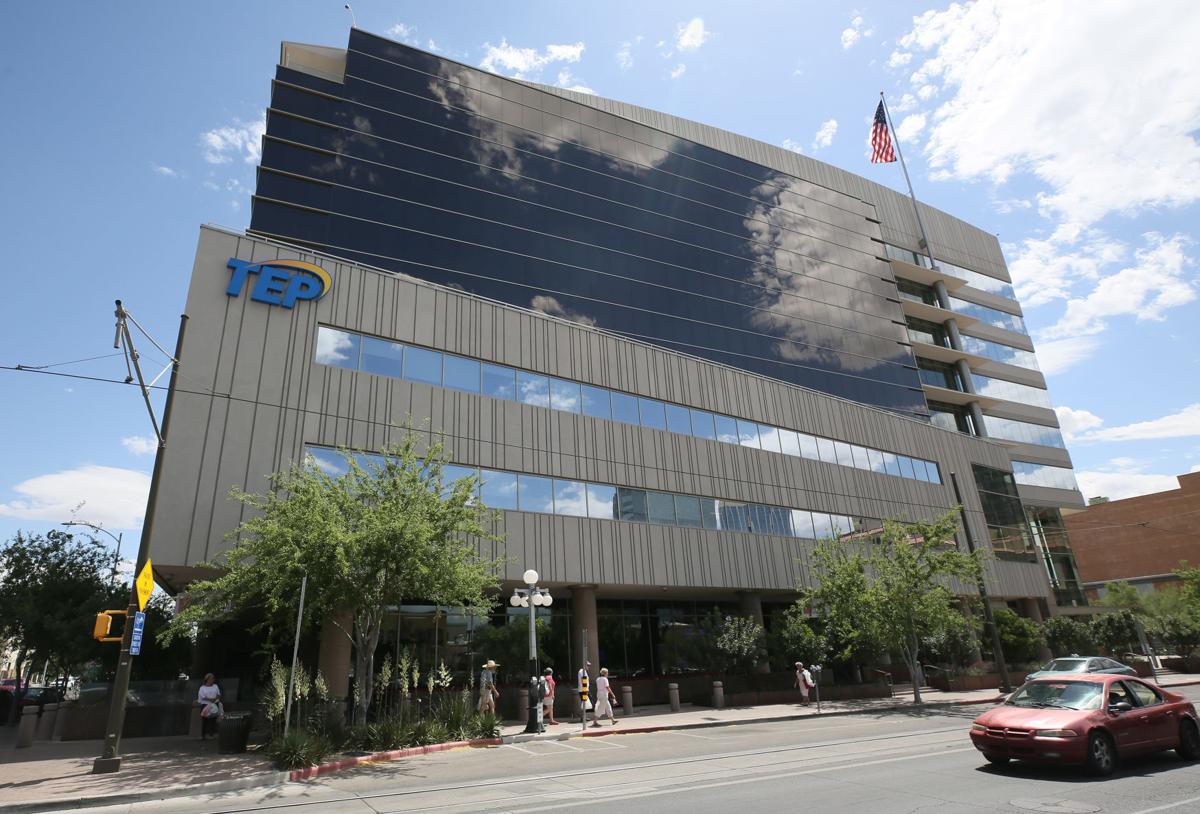Tucson Electric Power customers cut their electricity use by 4% during the pandemic’s first month.
While residential use soared by 7% from mid-March to mid-April commercial and industrial use more than offset that by dropping 10% compared with the same period in 2019, said TEP spokesman Joe Barrios.
“We have no way of telling in the long term how the pandemic might affect energy use or its impacts on our customers,” he said.
But this sudden drop could cause utility officials and interested parties to take a harder look at other ways to cut energy use, Barrios said, to reduce future demand for new power facilities.
Mid-March was when numerous Tucson businesses began closing and cultural events started being canceled due to growing concerns that workers and customers could be infected by the deadly virus.
On March 30, Gov. Doug Ducey issued a general stay-home order, requiring Arizonans not to leave their dwellings except for food, medicine, exercise and other “essential activities.” From then until he gradually lifted the restrictions this month, most people avoided businesses except for grocery stores, pharmacies and the like, and spent most of their time at home.
Electricity use declines were similar among TEP’s 429,000 customers in the Tucson metro area and among 97,000 customers of TEP sister company Unisource Energy Services, which provides electricity in Santa Cruz and Mohave counties, Barrios said.
Typically, sharp reductions in customer demand amount to a double-edged sword. Falling demand can deprive utilities of so much revenue that they need to seek rate increases to pay the bills.
But over a longer term, a decline in customer use can forestall the need for a utility to invest large amounts of money into big and often controversial projects, such as generating stations and power lines.
“I think it’s safe to say we expect energy use to increase in summer. But we have no way to predict beyond that,” Barrios said.
What the utility will do if a long-term decline occurs is also pretty speculative, he added.
“We can’t simply change our rates. We’d have to incorporate all of our costs in an application to the commission before any factors can be considered,” referring to the Arizona Corporation Commission, which must approve utility rate increases.
For now, utility officials don’t even know how much of the decline in electricity use was due to the pandemic and/or to unusual weather, Barrios said.
While mid-March’s weather wasn’t unusual, April temperatures were generally higher than normal, which could have increased electricity use as people turned on their air conditioners, he said.
For the future, he noted, “There are businesses that are opening up again. How might their energy use change? Will it increase or are they going to become more efficient in how they use energy, and their energy use will become flat?
“Whatever our customers’ energy needs are, our responsibility is to respond to them and fulfill that need,” Barrios said.
What’s clear is that TEP’s changes were much sharper than those experienced by Tucson Water after the pandemic struck.
Water use rose about 1% in April compared with April 2019, presumably because more people used more water as they stayed home.
Tucson Water use did rise 14% from March 2020 to April 2020, but that’s not much different than normal in that period as the weather warms up, said water utility spokesman Fernando Molina.
For the longer term, TEP predicts an annual 1% increase in total electricity sales. The annual increase could be 1.7% if electric vehicle sales pick up, utility officials told a public workshop on May 20.
The workshop was about a new 15-year resource plan TEP expects to make public in late June.
But the pandemic has definitely brought more uncertainty to future forecasts, a utility official told the workshop.
“It’s pretty speculative at this point what will happen in the future — a lot more so than normal. It all depends on the severity of the recession we face going forward,” said Gregory Strang, a TEP lead forecasting analyst.
One impact that will be considered by TEP is whether the sharp fall in electricity use should be seen as an example of what can be accomplished if the utility and its customers really set their minds on conservation. That will be discussed as the utility discusses the resource plan with an advisory committee representing many interest groups, Barrios said.
“There’s going to be a lot of interesting lessons learned about this, regarding impacts from reduced energy consumption,” said Ed Burgess, a senior director for Strategen.
That’s a consulting firm that did an energy efficiency study for the conservation group Western Resource Advocates to help push for energy savings as part of the new TEP resource plan. It’s due for public release in late June.
“I hesitate to say it is applicable. We don’t want people out of work staying home to show the benefits of reduced consumption,” Burgess said. “But it does raise the question of how we can get that done and deliver same energy services, using less energy to do it.”
Another more practical consideration during the pandemic is whether there could be opportunities to retrofit hotels and convention centers that are sitting unused to make them more energy efficient, he said.
“That poses more challenges. Contractors may be less able to access some homes and businesses due to social distancing,” he said. “There’s a lot to think about. It is something people are considering.”
A goal in TEP’s resource planning is to look at scenarios and consider different conditions to determine how it can keep providing energy while balancing factors such as the desire to reduce demand and the need for new power plants, Barrios said.
“Instead of having to add new resources, can we work with customers to reduce demand and still satisfy their needs? In short, yes,” he said.





